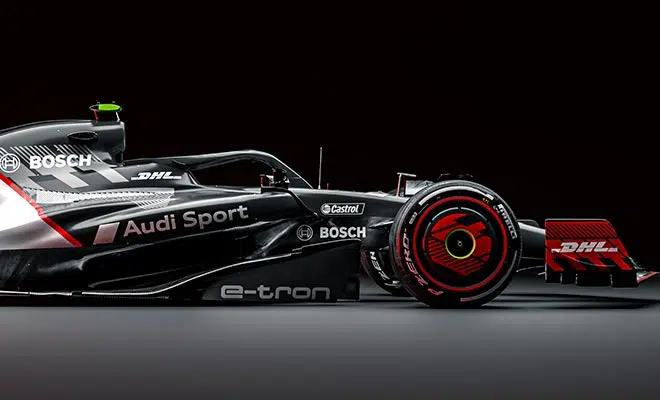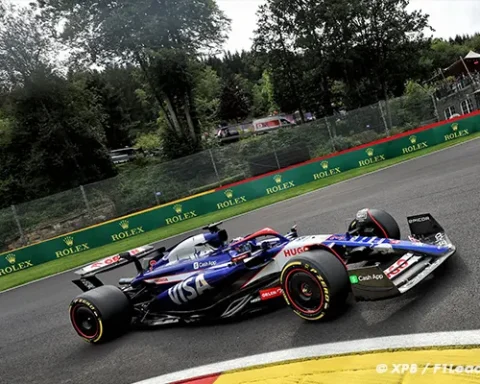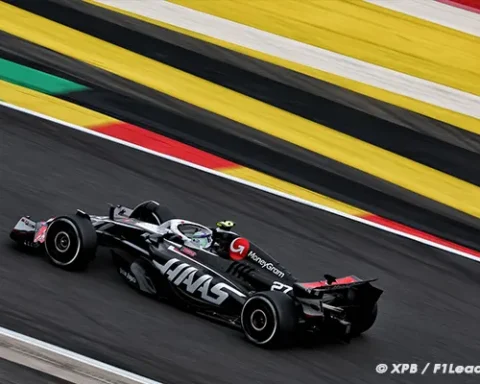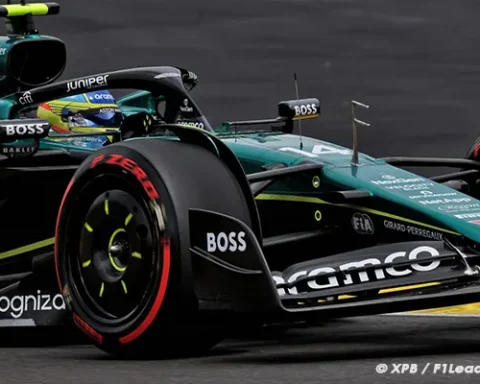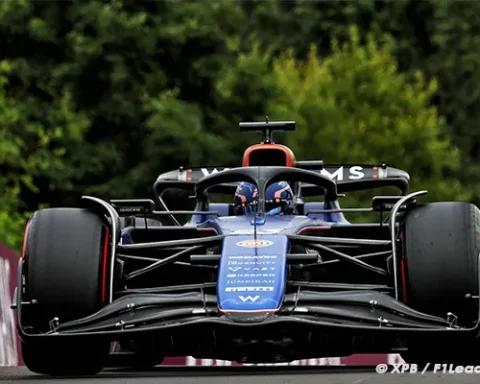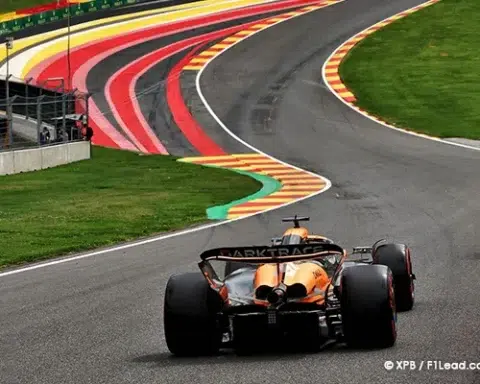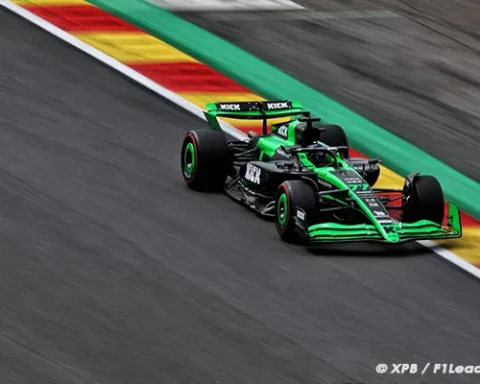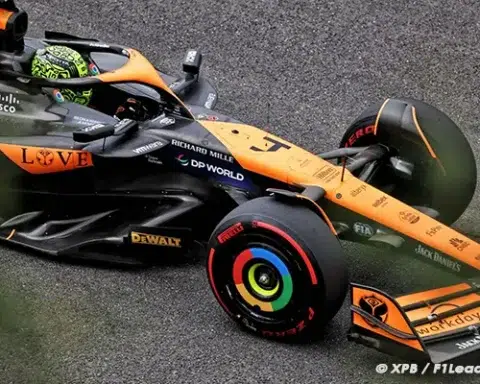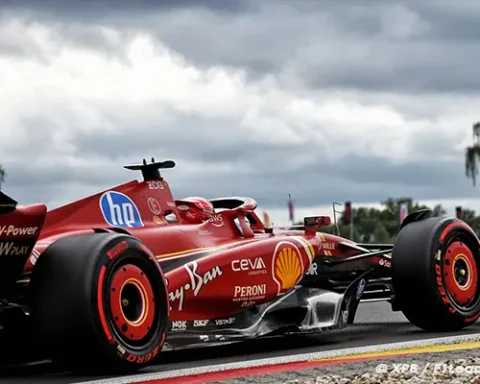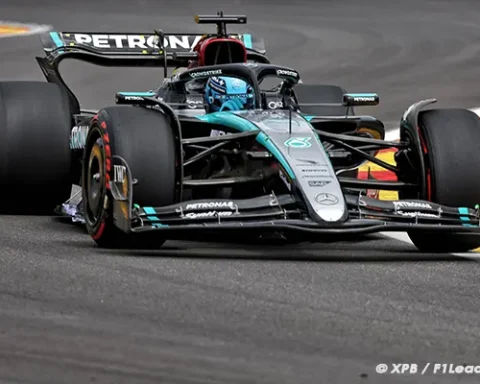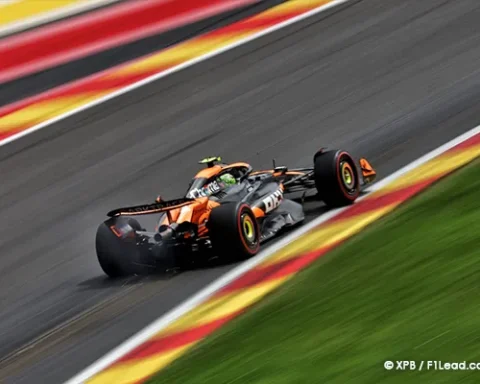In a significant turn of events just before last year’s holiday season, Audi’s new CEO openly addressed the brand’s eagerly awaited Formula 1 project. After over 100 days of leadership, a substantial statement finally emerged amidst a backdrop of speculation and rumors about Audi’s fluctuating commitment, influenced by major shifts in leadership within Audi and the Volkswagen Group. This announcement marks a pivotal moment, offering clarity on Audi’s ambitious F1 venture and setting the stage for what promises to be a transformative journey in the high-octane world of Formula 1 racing.
Audi CEO Döllner Speaks on F1 Venture and Plans
In a remarkable development just before the festive season last year, Audi’s newly appointed CEO broke the silence about the company’s much-anticipated Formula 1 venture.
After assuming the helm for over 100 days, the long-standing reticence gave way to a definitive statement regarding Audi’s involvement in a Formula 1 project, which had been the subject of widespread conjecture.
Amidst swirling rumors and contradictory reports about Audi’s wavering commitment following pivotal leadership shifts within Audi and the Volkswagen Group, the incoming CEO Gernot Döllner issued a robust affirmation of the ongoing progress of the F1 initiative.
While further details from Audi regarding the status and plans of this exciting new entrant in F1 might still be forthcoming, the outlines of this ambitious project are beginning to emerge.
Andreas Seidl, the designated CEO of Audi’s future Formula 1 team, has had a whirlwind of a first year after his transition from McLaren, positioning him at the forefront of shaping the team’s eventual debut.
Andreas Seidl’s Key Role in Audi’s F1 Strategy
As part of his duties, Andreas Seidl’s role involved providing Audi with a comprehensive understanding of what they were committing to in the world of Formula 1. His insights were particularly crucial during a period of heightened scrutiny and reevaluation of Audi’s involvement in the sport. This phase of assessment was further intensified by the dramatic portrayal of events at one point.
Seidl’s evaluations, along with his recommendations and requirements for Sauber—now known as Stake F1 until 2026—aligned with a period of significant board-level changes at Audi and Volkswagen. These shifts brought new leadership figures who were keen to fully understand the extent and implications of their Formula 1 commitment, especially during a challenging period for the group.
An additional layer of complexity arose from the timing of these changes. As some began to question Audi’s dedication to the project, it became apparent that Audi needed to increase its investment in Stake before 2026.
Stake team’s representative, Alessandro Alunni Bravi, has emphasized the importance of the next two seasons, rejecting the notion of them being mere “transition years.” They are, instead, pivotal for establishing a strong foundation—a sentiment shared and acknowledged by Audi.
Stake’s Growth Under Audi: Strategy and Investments
A key aspect of the agreement between Stake and Audi involves a governance structure that, for the time being, places a greater burden on the current majority shareholder, Finn Rausing. This arrangement will remain until Audi takes on more substantial control. Despite this, Audi’s financial contributions continue, albeit with a more controlled spending approach and lesser immediate responsibilities.
Audi’s strategic investment has begun yielding improvements at Stake, yet these advancements haven’t fully translated into the team’s on-track performances. Increased investments in production and design at the Hinwil facility notably enhance the team’s development capabilities.
In a strategic move, the team implemented a new Computational Fluid Dynamics (CFD) setup in May and June to enhance its competitive edge and boost calculation capacity and output.
Additionally, the recruitment of more experienced race team personnel signifies a strengthening of the team’s core competencies. Looking ahead to 2024, the introduction of new pitstop equipment is set to further bolster the team’s operational efficiency.
Audi and Stake: Aligning Goals with F1 Aspirations
Following the completion of a state-of-the-art simulator in 2021, the team has been utilizing it to its full potential since last year.
According to Alessandro Alunni Bravi, these advancements align seamlessly with the roadmap jointly laid out by Audi and Stake. However, there remains an active pursuit to leverage additional resources from Audi in the lead-up to 2025 and 2026.
The situation at Stake, while possibly not startling for seasoned F1 observers, does present a contrast between current capabilities and the aspirations set by Audi. The team boasts commendable facilities and skilled personnel but faces a staffing shortfall compared to the competitors Audi aims to challenge. Moreover, there’s a recognized need for technological enhancements both at the Hinwil base and at the racetrack.
Audi may have initially underestimated the chassis/team aspects necessary to emerge as a top contender by 2026. This, coupled with evolving factors like Stake receiving one of the largest bonuses in extra capital expenditure allowance, suggests that the team requires more investment than initially stipulated in the purchase agreement to fully capitalize on the next two years.
Audi Boosts Investment in F1 Amidst New Challenges
In essence, Audi finds itself in a position where it must increase its financial contributions beyond initial projections. Facilitating additional funding approvals from the relevant boards is not an overnight task, and this process has likely been complicated by recent organizational changes. The arrival of Gernot Döllner as CEO, while not derailing the project, may have contributed to a delay in Stake gaining access to these additional resources.
Alessandro Alunni Bravi emphasizes that the project is not losing momentum. “There is no slowdown in the project,” he asserts. The team is focused on expediting certain investments, identifying areas of weakness, and strategically directing resources to each department in coordination with shareholders, albeit without much public discourse.
The ongoing process of staff recruitment and infrastructural upgrades indicates that investing in an existing F1 team, especially one with several areas needing improvement, is likely to prove more costly than Audi had originally estimated. This scenario echoes a familiar narrative within the world of Formula 1. However, the presence of the cost cap in the sport serves as a mitigating factor, preventing unchecked escalation in expenditure as seen in the past.
Audi’s Flexible Approach in F1: Adapting for Success
Encouragingly, Audi appears adaptable to the realities of managing its upcoming works team, showing a willingness to revise the initial “governance” agreement. This flexibility suggests an avoidance of rigid mentalities that could otherwise hinder a large-scale, board-driven F1 project like this one. Such an approach is critical in a sport where adaptability can often be as valuable as financial investment.
The challenge of transforming Stake into a top-tier competitor in Formula 1 within Audi’s ambitious—and perhaps somewhat optimistic—three-year timeframe is formidable. Alessandro Alunni Bravi recognizes that finishing towards the bottom of the championship, as the team (formerly Alfa Romeo) did this year, dropping from sixth to ninth place, highlights significant areas for improvement.
In F1, progress is not always a straight line, and despite the non-linear nature of advancements in this sport, Audi likely envisioned a more positive trajectory than the on-track regression observed in the year since finalizing its takeover and becoming a minority shareholder.
Audi’s venture into F1 as an engine manufacturer is a crucial focus, but it cannot be the sole priority. The responsibility of enhancing the performance of Stake F1 cannot be left entirely to Andreas Seidl, armed with only the resources initially agreed upon before his tenure with the team began.
Audi’s Push for Stake’s Success in F1: 2024-2025 Vision
If Stake is to receive, or is already receiving, the additional support from Audi necessary for significant strides in 2024 and 2025, visible evidence of this investment would serve to bolster confidence among stakeholders and fans. The relative quiet surrounding the Audi project, partly due to restrictions from the team’s previous Alfa Romeo agreement, had begun to give an impression of stagnation. Demonstrating tangible progress and actively communicating about these developments will be key in shifting this perception and proving Audi’s commitment to elevating Stake in the competitive world of Formula 1.
Alessandro Alunni Bravi has confidently stated that Audi’s involvement in Formula 1 is a “long-term” commitment, underscoring the ambition for Audi to become as dominant in F1 as it is in the automotive industry. However, he also acknowledges that this aspiration could be significantly undermined if Audi doesn’t fully capitalize on the next two years.
The effectiveness of Audi’s commitment and strategy will become evident in 2026 and the subsequent years. Stake’s increased openness about its journey sets expectations for more comprehensive updates on the team’s progress, beginning early in 2024 and continuing throughout the year.
Audi & Stake in F1: Action Beyond Words for Success
However, as Alunni Bravi emphasizes, these updates must go beyond mere rhetoric. They should showcase actionable steps being taken and, more critically, translate these actions into tangible results.
The importance of demonstrating progress on the track is paramount. “We have the confidence that we are taking the right steps under the leadership of Andreas Seidl,” Alunni Bravi remarked. Yet, he is acutely aware that the ultimate evaluation of their efforts will be based on their on-track performance.
“We will be judged from what we are able to deliver, not from what we say now,” he concludes, highlighting the results-driven nature of Formula 1 and the imperative for Audi and Stake to translate their words and plans into real, measurable success.
Audi Formula 1 Venture and Stake F1 Investment Strategy. Audi Formula 1 Venture and Stake F1 Investment Strategy
You may like also
WILLIAMS RACING EXTENDS ENGINE DEAL WITH MERCEDES
Stay informed on the latest Formula 1 updates by following us on Facebook and Twitter
